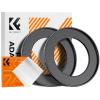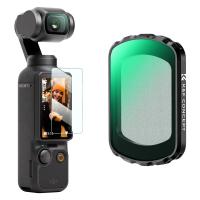Can We Connect Bluetooth Headphones To Desktop?
In today's fast-paced digital world, the convenience of wireless technology has become a necessity rather than a luxury. One of the most common queries among tech enthusiasts and everyday users alike is whether Bluetooth headphones can be connected to a desktop computer. The short answer is yes, but the process and requirements can vary depending on the specific setup of your desktop. This article will delve into the practical steps, potential challenges, and solutions for connecting Bluetooth headphones to a desktop computer.
Understanding Bluetooth Technology

Bluetooth is a wireless technology standard used for exchanging data between fixed and mobile devices over short distances using UHF radio waves. It eliminates the need for cables, making it a popular choice for connecting peripherals like headphones, keyboards, and mice to computers and other devices.
Checking Bluetooth Compatibility
The first step in connecting Bluetooth headphones to a desktop is to determine whether your desktop has built-in Bluetooth capabilities. Many modern desktops come with built-in Bluetooth, but older models may not. Here’s how you can check:
1. Windows:
- Open the Device Manager by right-clicking on the Start button and selecting it from the menu.
- Look for a Bluetooth section. If you see it, your desktop has built-in Bluetooth. If not, you will need an external Bluetooth adapter.
2. Mac:
- Click on the Apple menu and select "About This Mac."
- Click on "System Report" and look for Bluetooth under the Hardware section.
Adding Bluetooth to a Desktop
If your desktop does not have built-in Bluetooth, you can add it using a Bluetooth adapter. These adapters are small USB devices that provide Bluetooth functionality. Here’s how to set it up:
1. Purchase a Bluetooth Adapter:
- Ensure the adapter is compatible with your operating system.
- Popular brands include ASUS, TP-Link, and Plugable.
2. Install the Adapter:
- Plug the adapter into a USB port on your desktop.
- Install any necessary drivers. Most modern operating systems will automatically recognize the adapter and install the drivers, but you may need to download them from the manufacturer’s website.
Pairing Bluetooth Headphones with a Desktop
Once you have confirmed that your desktop has Bluetooth capabilities, you can proceed to pair your Bluetooth headphones. The process is straightforward but may vary slightly depending on your operating system.
1. Windows:
- Turn on your Bluetooth headphones and put them in pairing mode. This usually involves holding down the power button until a light starts flashing.
- Open the Settings app and go to Devices > Bluetooth & other devices.
- Turn on Bluetooth if it’s not already on.
- Click on "Add Bluetooth or other device" and select Bluetooth.
- Your desktop will search for available devices. Select your headphones from the list and follow any on-screen instructions to complete the pairing process.
2. Mac:
- Turn on your Bluetooth headphones and put them in pairing mode.
- Click on the Apple menu and select "System Preferences."
- Click on "Bluetooth" and ensure it is turned on.
- Your Mac will search for available devices. Select your headphones from the list and click "Connect."
Troubleshooting Common Issues
While connecting Bluetooth headphones to a desktop is generally straightforward, you may encounter some issues. Here are common problems and their solutions:
1. Headphones Not Detected:
- Ensure your headphones are in pairing mode.
- Restart your desktop and try again.
- Make sure your Bluetooth adapter is properly installed and functioning.
2. Poor Audio Quality:
- Check for interference from other wireless devices.
- Ensure your headphones are within range of the Bluetooth adapter.
- Update your Bluetooth drivers.
3. Connection Drops:
- Move closer to the Bluetooth adapter.
- Ensure there are no obstacles between the headphones and the adapter.
- Check for software updates for both your desktop and headphones.
Enhancing the Bluetooth Experience
To get the most out of your Bluetooth headphones, consider the following tips:
1. Keep Software Updated:
- Regularly update your operating system and Bluetooth drivers to ensure compatibility and performance.
2. Optimize Battery Life:
- Turn off your headphones when not in use to conserve battery.
- Charge your headphones regularly to avoid interruptions.
3. Use Quality Adapters:
- Invest in a high-quality Bluetooth adapter to ensure a stable and reliable connection.
Connecting Bluetooth headphones to a desktop computer is a practical solution for those seeking the convenience of wireless audio. Whether your desktop has built-in Bluetooth or requires an external adapter, the process is relatively simple and can greatly enhance your computing experience. By following the steps outlined in this article and addressing any potential issues, you can enjoy the freedom and flexibility that Bluetooth technology offers. Whether you’re listening to music, participating in video calls, or gaming, Bluetooth headphones can provide a seamless and enjoyable audio experience on your desktop.









































